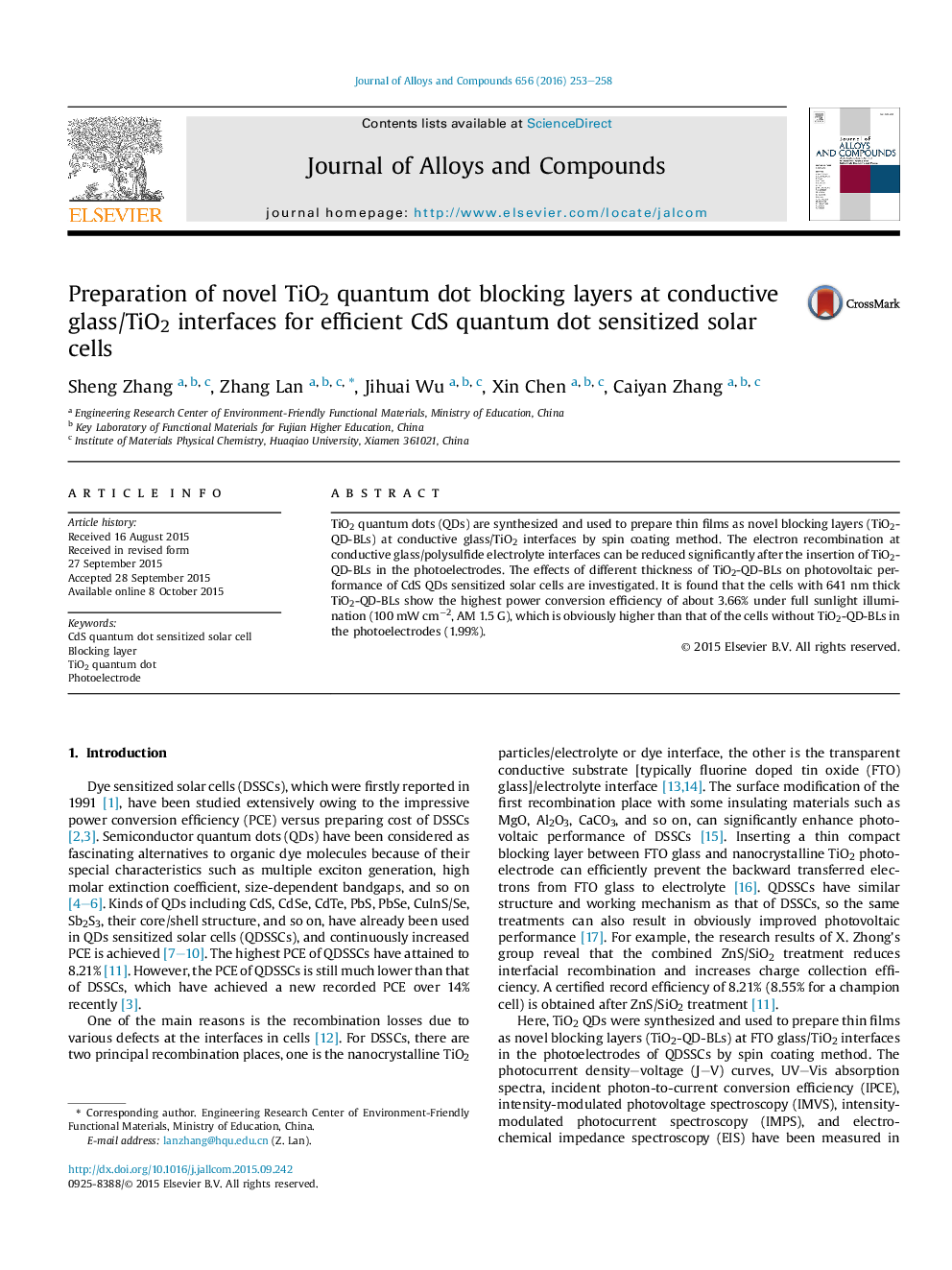| Article ID | Journal | Published Year | Pages | File Type |
|---|---|---|---|---|
| 1607662 | Journal of Alloys and Compounds | 2016 | 6 Pages |
•TiO2 quantum dots were synthesized and a crystalline blocking layer was prepared by spin coating method.•The electron recombination at FTO/polysulfide electrolyte interfaces can be reduced by TiO2 quantum dots blocking layer.•The cell with TiO2 quantum dots blocking layer showed an efficiency of 3.66% compared to that (1.99%) for reference.
TiO2 quantum dots (QDs) are synthesized and used to prepare thin films as novel blocking layers (TiO2-QD-BLs) at conductive glass/TiO2 interfaces by spin coating method. The electron recombination at conductive glass/polysulfide electrolyte interfaces can be reduced significantly after the insertion of TiO2-QD-BLs in the photoelectrodes. The effects of different thickness of TiO2-QD-BLs on photovoltaic performance of CdS QDs sensitized solar cells are investigated. It is found that the cells with 641 nm thick TiO2-QD-BLs show the highest power conversion efficiency of about 3.66% under full sunlight illumination (100 mW cm−2, AM 1.5 G), which is obviously higher than that of the cells without TiO2-QD-BLs in the photoelectrodes (1.99%).
Graphical abstractFigure optionsDownload full-size imageDownload as PowerPoint slide
